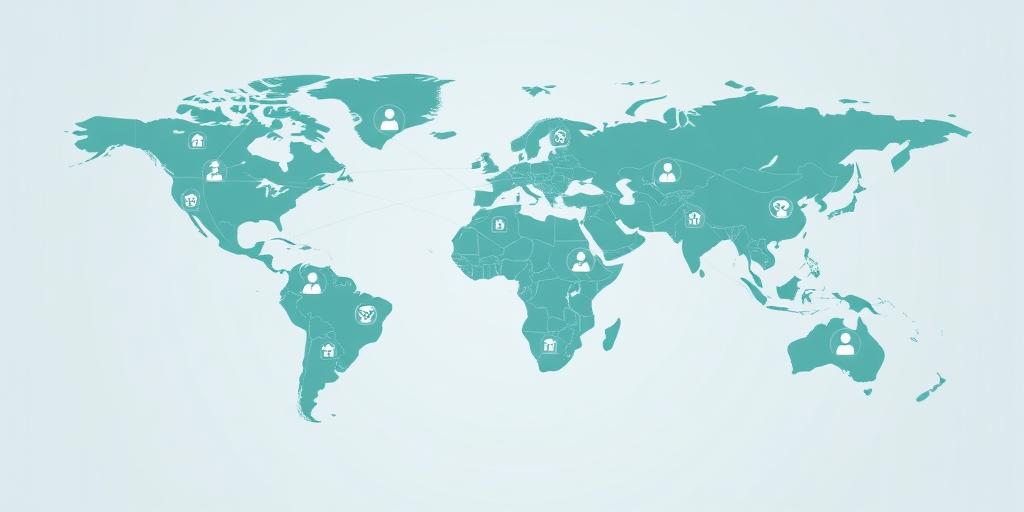Key Global Economic Shifts and Their Geographic Significance
The global economic landscape is in constant flux, driven by a complex interplay of factors ranging from technological advancements and geopolitical events to demographic shifts and environmental concerns. Understanding these shifts and their geographic implications is crucial for businesses, policymakers, and individuals alike. This post will explore some of the most significant ongoing transformations and how they are reshaping the world's economic map.
1. The Rise of Emerging Markets
One of the most prominent shifts is the continued rise of emerging markets, particularly in Asia and Africa. Countries like China, India, Indonesia, and Nigeria are experiencing rapid economic growth, driven by factors such as:
- Demographic Advantages: Large and young populations provide a growing workforce and consumer base.
- Investment in Infrastructure: Governments are investing heavily in infrastructure development, improving connectivity and facilitating trade.
- Technological Adoption: Rapid adoption of mobile technology and internet access is driving innovation and economic activity.
- Resource Abundance: Many emerging markets are rich in natural resources, providing a valuable source of revenue.
Geographic Significance: This shift is leading to a rebalancing of global economic power, with emerging markets playing an increasingly important role in global trade, investment, and innovation. We are seeing a rise in south-south trade and investment, as well as the emergence of regional economic hubs.
2. The Digital Revolution
The digital revolution is transforming economies across the globe, disrupting traditional industries and creating new opportunities. Key aspects of this transformation include:
- E-commerce: Online marketplaces are connecting businesses and consumers across borders, expanding market reach and driving competition.
- Automation: Automation technologies are increasing productivity and reducing labor costs, but also raising concerns about job displacement.
- Data Analytics: Big data and analytics are providing businesses with valuable insights into consumer behavior and market trends.
- Fintech: Financial technology is revolutionizing the financial services industry, making it easier and cheaper to access financial products and services.
Geographic Significance: The digital revolution is creating new economic opportunities in areas with strong digital infrastructure, skilled workforce, and supportive regulatory environments. This is leading to the growth of tech hubs in cities around the world, attracting investment and talent.
3. Climate Change and the Green Economy
Climate change is an increasingly pressing global challenge, with significant economic implications. The transition to a green economy is driving innovation and investment in renewable energy, sustainable agriculture, and other environmentally friendly technologies. Key trends include:
- Renewable Energy: Solar, wind, and other renewable energy sources are becoming increasingly competitive with fossil fuels.
- Electric Vehicles: The adoption of electric vehicles is accelerating, driven by government incentives and technological advancements.
- Sustainable Agriculture: Farmers are adopting more sustainable practices to reduce their environmental impact and improve productivity.
- Green Finance: Investors are increasingly incorporating environmental, social, and governance (ESG) factors into their investment decisions.
Geographic Significance: Regions with abundant renewable energy resources, such as solar and wind, are well-positioned to benefit from the transition to a green economy. Coastal areas are particularly vulnerable to the impacts of climate change, such as rising sea levels and extreme weather events, requiring investment in adaptation measures.
4. Demographic Shifts
Demographic shifts, such as aging populations and declining birth rates in many developed countries, are also having a significant impact on the global economy. These trends are leading to:
- Labor Shortages: Aging populations are leading to labor shortages in some sectors, requiring businesses to find new ways to attract and retain workers.
- Increased Healthcare Costs: Older populations require more healthcare services, putting pressure on government budgets.
- Changes in Consumer Demand: As populations age, consumer demand is shifting towards goods and services that cater to older adults.
- Migration: Migration is playing an increasingly important role in addressing labor shortages and supporting economic growth.
Geographic Significance: Countries with aging populations may need to attract skilled immigrants to fill labor shortages and maintain economic growth. Regions with younger populations may experience faster economic growth, driven by a growing workforce and consumer base.
5. Geopolitical Instability
Geopolitical instability, including trade wars, political conflicts, and terrorism, can disrupt global supply chains, reduce investment, and increase uncertainty. Key factors contributing to geopolitical instability include:
- Trade Disputes: Trade disputes between major economies can disrupt global trade flows and harm businesses.
- Political Conflicts: Political conflicts can lead to humanitarian crises and disrupt economic activity.
- Terrorism: Terrorism can disrupt tourism, reduce investment, and increase security costs.
- Cyberattacks: Cyberattacks can disrupt businesses, steal data, and undermine confidence in the digital economy.
Geographic Significance: Regions that are politically unstable or located near conflict zones are more vulnerable to economic disruption. Businesses need to carefully assess the geopolitical risks associated with operating in different countries and regions.
Conclusion
The global economy is undergoing significant transformations, driven by a complex interplay of factors. Understanding these shifts and their geographic implications is crucial for businesses, policymakers, and individuals alike. By anticipating these changes and adapting to them, we can create a more prosperous and sustainable future for all.









